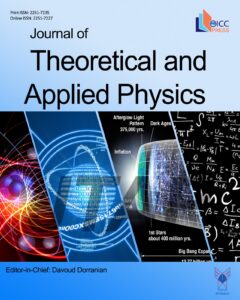Synthesis and characterization of TiO2- Ag- chitosan nano-composites in order to surface modification and bone tissue engineering using dip coating method
Authors
Abstract
In this research, titanium dioxide (TiO2) nanopowder, TiO2-Ag (TA) and TiO2-Ag-CH (TACH) nanocomposite were produced by the hydrothermal method. After the synthesis of nanoparticles and nanocomposites, the skull titanium mesh implant pieces were immersed in solutions containing nanopowders of TiO2, TA, and TACH and coated using the dip coating method. Structural, chemical, and antibacterial properties of these nanocomposites were characterized using X-ray diffraction (XRD), Field emission scanning electron microscope (FESEM), tunneling electron microscopy (TEM), Fourier transform infrared (FTIR) spectroscopy, Raman analysis, Specific surface area was determined by the Brunauer-Emmett-Teller analysis (BET) method and the antibacterial properties of the coated implants were investigated using the disk diffusion method, a widely used technique that measures the diameter of the zone of inhibition around a sample containing an antibacterial agent on an agar culture medium inoculated with a microorganism, as well as viable cell count. The X-ray diffraction (XRD) patterns of TiO2 shows all the diffraction peaks of TiO2 nano-powder show the crystalline structure. Also, the XRD pattern of TA nanocomposite shows the diffraction peaks that are related to the anatase-rutile mixed phase. The XRD of TACH nanocomposite indicate the diffraction peaks of anatase phase of TiO2, Ag and CH nanoparticles. The surface morphology of TiO2, TA and TACH nanocomposites was characterized using FESEM. The TEM images of TiO2, TA and TACH nanocomposites show they are spherical in shape and the size of nanoparticles less than 100 nm. FTIR spectrum of TiO2, TA and TACH nanocomposites was used to observe the interactions between silver and chitosan nanocomposites and TiO2 nanoparticles. The Raman spectroscopy for TiO2, TA and TACH nanocomposites show four characteristic Raman active modes of anatase TiO2 with symmetries of Eg, B1g, A1g and Eg were observed at 134, 382, 500 and 618 cm-1, respectively. BET analysis of TiO2, TA and TACH nanocomposites including effective area, effective porosity volume and the average diameter of porosity using the BET method. Based on the antibacterial results, it has been observed that the TA and TACH nanocomposites have effectively inhibited bacterial growth, as evidenced by the clear non-growth halo around the bacteria in the growth inhibition halo images. It can also be seen that TACH nanocomposite showed the highest antibacterial property and TiO2 nanoparticle had the lowest antibacterial property on both Escherichia coli (E. coli) and Staphylococcus aureus (S. aureus).




